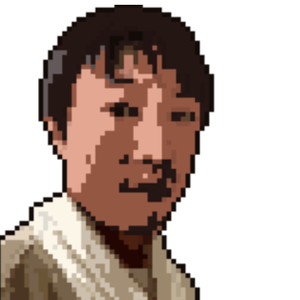Section C
Directions: There are 2 passages in this section. Each passage is followed by some questions or unfinished statements. For each of them there are four choices marked A), B), C) and D). You should decide on the best choice and mark the corresponding letter on Answer Sheet 2 with a single line through the centre.
Passage One
Questions 46 to 50 are based on the following passage.
The weakening of the human connection to nature might be good for economic growth but is bad for people. A tipping point was reached in 2020 when human-made materials—such as steel, concrete and plastic—were found to weigh more than all life on Earth. Continuing to grow concrete forests rather than real ones is shortsighted. Simply being in the nearest wood has such health benefits that the Woodland Trust successfully lobbied for it to be prescribed by doctors.
Yet slipping from popular culture is the wonder and beauty of the natural world. For every three nature-related words in hit songs of the 1950s, researchers found, there was only slightly more than one 50 years later. It is not a moment too soon that teenagers will be able to take a natural history test, given that for decades children have been able to name more video game characters than wildlife species.
Part of remedying this social disease would be for parliament to pass a “right to grow” law, allowing anyone to turn underused public spaces into vegetable and fruit gardens. The idea is for people to get back in touch with the soil—while producing food sustainably.
Vegetable planting has a respectable tradition. In April 1649, locals responded to high prices and food shortages by cultivating vegetables on common land in Southern England. The practice of throwing seed bombs to turn vacant plots of land green took off in 1970s New York, and has been revived by green-thumbed social media influencers who defy local US regulations in a war on ugly spots in cities.
Apart from the urgent task of providing more healthy nutrients to those who increasingly can’t afford them, publicly accessible fruit and vegetable gardens connect what we eat to where it comes from—the means of production, if you will. They can make unlovely spaces lovely, and marry use and beauty as well as help promote a sense of community. Plants are also, of course, our first defence against species loss and climate change. Such planting is a small step for humanity—in the right direction.
46 人类与自然联系的弱化可能有利于经济增长,但对人类不利。2020年,当人们发现钢筋、混凝土和塑料等人造材料的重量超过地球上所有生命的重量时,这种弱化就达到了一个临界点。继续种植混凝土森林而不是真正的森林是一种短视行为。仅仅是身处最近的树林中就对健康大有裨益,因此林地信托基金成功游说医生将其列为处方。
47 然而,自然界的神奇与美丽却在大众文化中逐渐消失。研究人员发现,在20世纪50年代的热门歌曲中,每出现三个与自然相关的词汇,50年后(在热门歌曲里)与之对应的这类词汇仅仅是一个略多一点。考虑到几十年来,孩子们能说出的电子游戏角色的名字比野生动物物种的名字还多,现在让青少年参加自然历史考试并不算太早。
48 议会应该通过一项“种植权”法律,允许任何人将未充分利用的公共空间变成蔬果园,这将是治疗这种社会弊病的部分措施。这一想法的目的是让人们重新与土地建立联系——同时可持续地生产食物。
蔬菜种植有着令人尊敬的传统。 49 1649年4月,英格兰南部的当地人为了应对高物价和粮食短缺,在公共土地上种植蔬菜。20世纪70年代,纽约兴起了用投掷种子炸弹的方式来绿化空地的做法,现在这种做法又被有园艺才能的社交媒体影响人士复兴,他们不顾美国当地的规定,向城市中的丑陋角落宣战。
除了为越来越多买不起营养品的人提供更多的健康营养品这一紧迫任务外,公众可使用的蔬果园还将我们吃的东西与它的来源——可以说是生产资料——联系起来。 50 它们可以让不可爱的空间变得可爱,将使用和美观结合起来,也有助于增强社区意识。当然,植物也是我们抵御物种损失和气候变化的第一道防线。这样的种植是人类朝着正确方向迈出的一小步。
- 46
- 单选题
- 分值:14.2
What does the author want to emphasise in the first paragraph?
问:作者在第一段中想强调什么?
- 2020年是人类历史上的一个重大转折点。
- 从长远来看,经济增长对人们几乎没有益处。
- 削弱人类与自然的联系是不明智的。
- 使用人造材料对人类有害。
定位:第一段首句“The weakening of the human connection to nature might be good for economic growth but is bad for people.” 以及该段后续关于“critical point”和“shortsighted”的论述。
解析:
- 不正确。2020年达到临界点是一个用于支撑核心论点的具体例证,但并非段落主旨。作者意在借此说明问题的严重性,而非单纯强调这个年份本身。
- 不正确。作者指出削弱与自然的联系对经济可能有利但对人不利,这是一种权衡,并未完全否定经济增长的长期益处。
- 正确。段落开篇即点明核心观点“人类与自然联系的弱化……对人类不利”,并通过具体数据和“短视行为”的评价,反复强调这种弱化是不明智、不可取的。
- 不正确。使用人造材料是“人类与自然联系弱化”的一种表现和结果,其本身是问题的症状而非根源。作者批判的是更宏观的“联系弱化”趋势。
- 47
- 单选题
- 分值:14.2
What did researchers find about popular culture?
问:研究人员对大众文化有何发现?
- 它越来越脱离自然界。
- 它充斥着各种电子游戏角色。
- 它特别迎合青少年的口味。
- 它仍然受到20世纪50年代热门歌曲的影响。
定位:第二段首句“Yet slipping from popular culture is the wonder and beauty of the natural world.” 以及后续关于歌曲中自然词汇减少和儿童更熟悉游戏角色的研究。
解析:
- 正确。段落主题句明确指出自然界的奇妙与美丽正从大众文化中“逐渐消失(slipping from)”,后续的研究数据(歌词词汇变化、儿童认知)均是对这一主题的具体证明,表明大众文化与自然界的关联性在减弱。
- 不正确。文中仅提到儿童能说出更多游戏角色名字,这是一种对比,用以说明对自然认知的匮乏,并未断言大众文化“充斥着”游戏角色。
- 不正确。文中未对大众文化的主要受众或品味倾向进行评价。
- 不正确。文中提到50年代歌曲是为了与50年后做对比,以显示变化趋势,并未说明当代文化仍受其影响。
- 48
- 单选题
- 分值:14.2
What does the author propose people do?
问:作者建议人们做些什么?
- 采取措施确保粮食的可持续发展。
- 通过种植权重新与大自然建立联系。
- 站在议会一边,与社会弊病作斗争。
- 在公共场所种植果树和蔬菜。
定位:第三段,特别是“The idea is for people to get back in touch with the soil”这句话。
解析:
- 不正确。可持续生产食物是“种植权”计划可能带来的附带好处之一,但并非作者建议的核心目的。
- 正确。作者的核心提议是议会通过“种植权”法律,而其根本目的(the idea is)是让人们“重新与土地建立联系(get back in touch with the soil)”,这正是与自然重建连接的方式。
- 不正确。“社会弊病”在文中指代的是人类与自然联系弱化的问题。作者是呼吁议会采取行动立法,而非建议人们去支持议会。
- 不正确。将公共空间变为蔬果园是“种植权”法律所允许的具体行为,是实现“重新与自然建立联系”这一目的的手段,而非作者提出的最终建议本身。
- 49
- 单选题
- 分值:14.2
What do we learn from the passage about vegetable planting?
问:关于蔬菜种植,我们从文章中了解到什么?
- 它始于1649年的英格兰南部。
- 它受到美国政府法规的保护。
- 它长期以来被用于增加食物供应和改善城市景观。
- 随着社交媒体影响的不断扩大,它已在全球范围内普及。
定位:第四段,该段通过1649年英格兰和1970年代纽约的例子阐述了蔬菜种植的传统和用途。
解析:
- 不正确。1649年英格兰的例子只是文中提到的早期实践之一,使用“all started”(全部始于)过于绝对,且与后文纽约的例子矛盾。
- 不正确。文中明确指出,当代美国的一些园艺活动是“不顾美国当地的规定(defy local US regulations)”,说明其并未受到法规保护,甚至可能与之冲突。
- 正确。文中1649年的例子体现了“应对高物价和粮食短缺”(增加食物供应),1970年代纽约的“种子炸弹”和当代社交媒体影响者的活动体现了“绿化空地”、“向城市中的丑陋角落宣战”(改善城市景观),表明其长期具有这两方面用途。
- 不正确。文中仅提到社交媒体影响者复兴了种子炸弹的做法,并未提及蔬菜种植因此已在“全球范围内普及”。
- 50
- 单选题
- 分值:14.2
What can publicly accessible fruit and vegetable gardens do apart from their practical functions?
问:除了实用功能外,公众可使用的蔬果园还能做些什么?
- 提高人们的环保意识。
- 增加植物种类的多样性。
- 作为抵御自然灾害的第一道防线。
- 增强人们的社区精神。
定位:文章最后一段“They can make unlovely spaces lovely, and marry use and beauty as well as help promote a sense of community.”
解析:
- 不正确。虽然蔬果园客观上可能有助于环保,但段落中明确列出的、除实用功能(提供营养、生产食物)之外的好处,并未直接包括“提高环保意识”。
- 不正确。文中未提及蔬果园在增加植物物种多样性方面的作用。
- 不正确。该选项混淆了概念。段落最后提到“植物(Plants)”是抵御物种损失和气候变化的第一道防线,这是植物本身的作用,并非特指“公众可使用的蔬果园”除实用功能外的社会或美学功能。
- 正确。段落明确将“有助于增强社区意识(help promote a sense of community)”列为蔬果园的功能之一,且此功能超越了其生产食物的基本实用功能。
留言数:0



